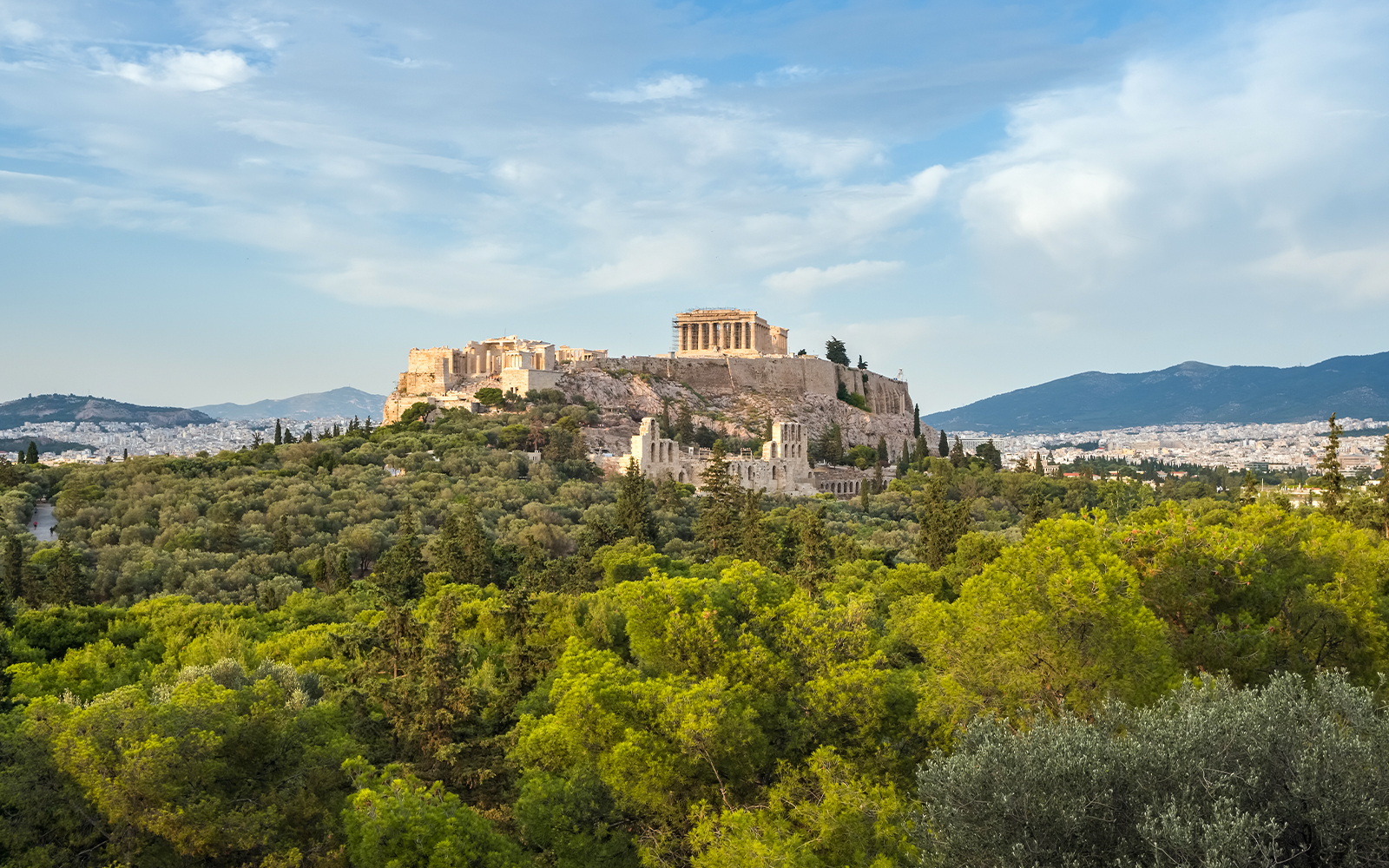The Acropolis, which means ‘high city’, stands as Athens' most iconic monument with over 3,300 years of history. This ancient citadel wasn't just a religious center — it was a powerful symbol of Athenian might. Perched high above modern Athens, the Acropolis has witnessed centuries of dramatic change, surviving occupations by Mycenaeans, ancient Athenians, Romans, Ottomans, and briefly, even Nazi forces.
Its magnificent architecture and rich history continue to amaze visitors even today. To truly appreciate this remarkable site, you'll want to understand the fascinating stories and facts behind it.
Acropolis facts you must know!
The true meaning of Acropolis aka High City

The word "Acropolis" originates from two ancient Greek words: "akron" meaning "highest point" and "polis" meaning "city." While not technically Athens' highest point (that's Lycabettus Hill at 300 meters), the Acropolis was strategically chosen as the city's religious and political heart. From this elevated position, it commanded impressive views and served as both a fortress and sacred center since the Bronze Age. It is here where Socrates often engaged in philosophical debates and where young Athenians gathered to learn from masters of rhetoric.
Wait, there’s more than one Acropolis?
Yep, Athens' Acropolis might grab most of the attention, but ancient Greece had these high-city citadels everywhere. Cities like Argos, Thebes, Corinth, and Tiryns each boasted their own acropoleis, providing both defense and a cultural heartbeat for their people.
Record tourism crowds pack the Acropolis post-covid
Today, the Acropolis attracts between 2 and 3 million visitors annually, with peak days seeing up to 23,000 guests. Authorities implemented timed entry slots and a maximum visitor limit of 20,000 per day starting September 2024—to give everyone a better experience exploring this ancient wonder.
Looking for your best bet? Save time and money—and skip the queue misery—with the popular Acropolis & Parthenon Guided Tour for expert insights, or snag skip-the-line tickets that let you breeze into both the Acropolis and its fantastic museum.
The Parthenon’s survival story
When the Persians invaded Athens in 480 BC, they flattened the original temple (now known as the Pre-Parthenon). But Athenians didn't back down. In 447 BC, under the legendary Pericles, they rebuilt bigger and better, combining Doric and Ionic architectural brilliance and sneaking in mathematical perfection with the Golden Ratio. Fun fact: the design’s subtle curves create optical illusions—something architects copied countless times, even influencing iconic modern buildings like the US Supreme Court and the Lincoln Memorial.
The legend of the sacred Olive tree

Oh, and speaking of legends—nearby there's the Erechtheion temple featuring a famous olive tree. According to myth, Athena planted this tree as her gift to the city, cunningly beating Poseidon's less-than-useful saltwater spring.
Turns out the tree that's there today isn't exactly Athena's original one—but its ancestor likely saw Persian flames and literally sprouted back to life. The current descendant was planted by Queen Sophia of Spain in 1952.
What happened to the 30-foot bronze statue of Athena?
Towering tall between the Parthenon and Propylaea gate once stood Athena Promachos (“Athena the front-line fighter”), a bronze masterpiece forged by legendary sculptor Phidias. Phidias didn't stop there; he also crafted the epic golden Athena inside the Parthenon. But Athena Promachos met an unfortunate fate—carted off to Constantinople around the 5th century CE and destroyed by rioters in 1203. You can still spot her statue base near the Propylaea today.
The walls around Acropolis are 3,300 years old
The Acropolis' first defensive wall, built by Mycenaeans in the 13th century BCE, featured massive stone blocks and protected a palace complex. After the Persian Wars in the 5th century BCE, two new walls were constructed: the northern Themistoclean Wall, built from destroyed monument pieces, and the southern Kimonian Wall, erected in 467 BCE. Over time, towers were added for enhanced defense.
The Ottoman Era and Venetian Siege
In 1458, the Ottomans took Athens, converting the Parthenon into a mosque (complete with a minaret) and using it—tragically—as a gunpowder storage unit. It went exactly as badly as you'd expect: in 1687, Venetian forces, under Francesco Morosini, laid siege to Athens during the Morean War. A Venetian cannonball blasted the the Parthenon’s gunpowder stash, causing an explosion that severely damaged the once-flawless structure.
Greece's commitment to heritage
The Acropolis is undergoing a meticulously planned restoration effort that spans over 50 years, making it one of the most extended archaeological projects globally. Specialists use original Pentelic marble—the same material admired by ancient Athenians—to replace damaged sections, staying true to the site's historical authenticity. Combining traditional ancient techniques with state-of-the-art technology such as laser scanning and 3D modeling, archaeologists and scientists are reversing previous restoration mistakes, mitigating damage from environmental pollution, and fortifying the site against earthquake damage.
Recommended tickets to Acropolis

